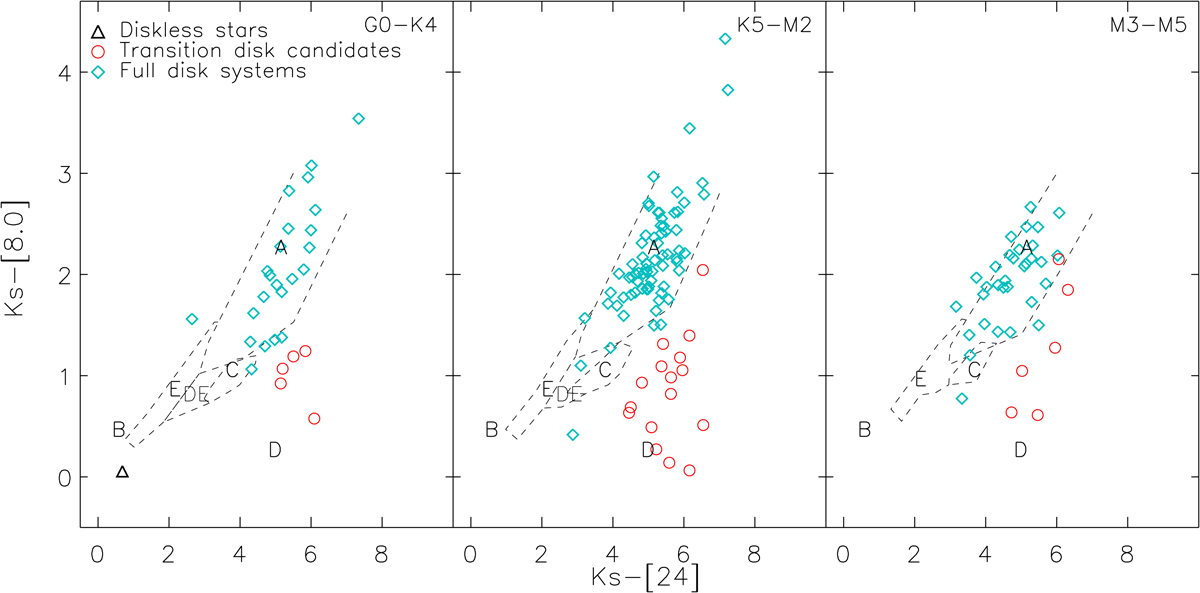Fig. 4.

Near-IR and mid-IR color-color diagram for stars belonging to NGC 2264 broken up by spectral type ranges into three plots. We can see two different populations: stars with full disks present emission excess above the photospheric level in the inner and outer parts of the disk, while transition disk candidates present little dust emission in the inner disk, and dust emission in the outer disk compatible with full disk systems. The dashed lines delimit regions with different disk dispersal mechanisms computed by Koepferl et al. (2013). Region (A) represents thick primordial disks, (B) stellar photospheres, (C) ultra-settled primordial disks (flat disks), (D) inside to outside depleted disks, (E) homogeneously depleted disks and (DE) is a region that may contain systems with homogeneously depleted disks and inside to outside depleted disks. The stars we have selected as full disks and transition disks fall in regions of this diagram that are consistent with that expected from the models.
Current usage metrics show cumulative count of Article Views (full-text article views including HTML views, PDF and ePub downloads, according to the available data) and Abstracts Views on Vision4Press platform.
Data correspond to usage on the plateform after 2015. The current usage metrics is available 48-96 hours after online publication and is updated daily on week days.
Initial download of the metrics may take a while.


